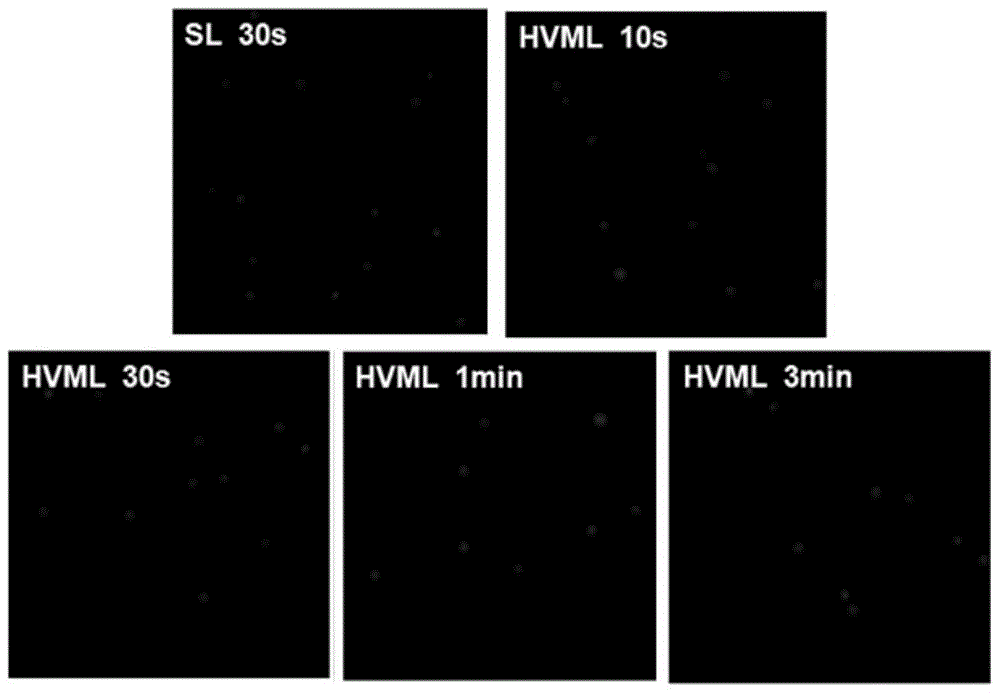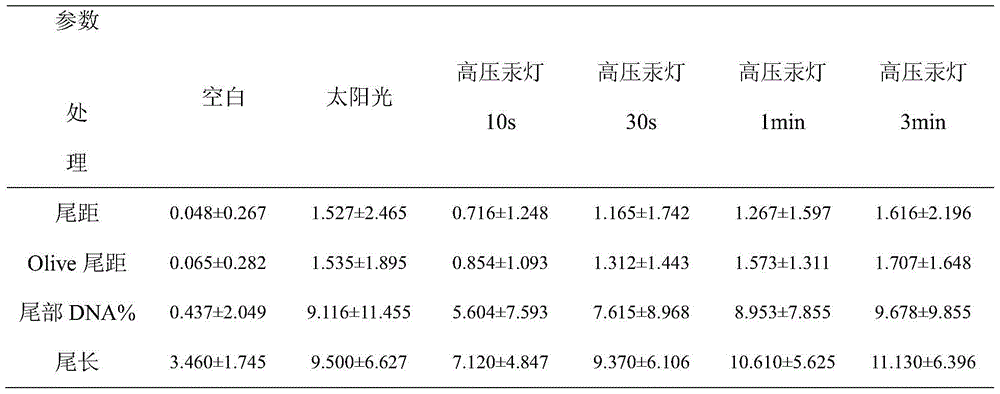A method for single-cell gel electrophoresis of algal cells
A single-cell gel, algal cell technology, applied in the field of single-cell detection, can solve the problems of difficult DNA damage quantification, low cell lysis efficiency, and low incidence of "comet" tailing phenomenon, and achieves improved experimental success rate. High rate, to achieve permanent fixed effect
- Summary
- Abstract
- Description
- Claims
- Application Information
AI Technical Summary
Problems solved by technology
Method used
Image
Examples
Embodiment 1
[0027] A method for single-cell gel electrophoresis of algal cells:
[0028] 1) Fabrication and surface modification of the micro-electrophoresis tank: Divide the slide glass into 20-25 narrow strips of 25mm×3mm×1mm (length×width×thickness) along the width of the smooth slide glass with a glass knife. Then paste these narrow strips on a clean smooth glass slide with neutral glass glue (containing 3% to 5% sodium silicate) to form a small square groove, which is the micro-electrophoresis groove. The surface modification of the micro-electrophoresis tank adopts the coating method, that is, the micro-electrophoresis tank is immersed in 2g / L (for routine analysis) normal melting point agarose for 1 min, and then baked in a 37°C incubator for 2 hours.
[0029] 2) Preparation of protoplasts:
[0030] (1) UV exposure: Cultivate Chlorella pyrenoidosa cells until the 6th day, add 10mL algae liquid (algae cell density is 10 7 individual / mL). The algae cells are 10cm away from the 125...
PUM
| Property | Measurement | Unit |
|---|---|---|
| concentration | aaaaa | aaaaa |
Abstract
Description
Claims
Application Information
 Login to View More
Login to View More - R&D Engineer
- R&D Manager
- IP Professional
- Industry Leading Data Capabilities
- Powerful AI technology
- Patent DNA Extraction
Browse by: Latest US Patents, China's latest patents, Technical Efficacy Thesaurus, Application Domain, Technology Topic, Popular Technical Reports.
© 2024 PatSnap. All rights reserved.Legal|Privacy policy|Modern Slavery Act Transparency Statement|Sitemap|About US| Contact US: help@patsnap.com









